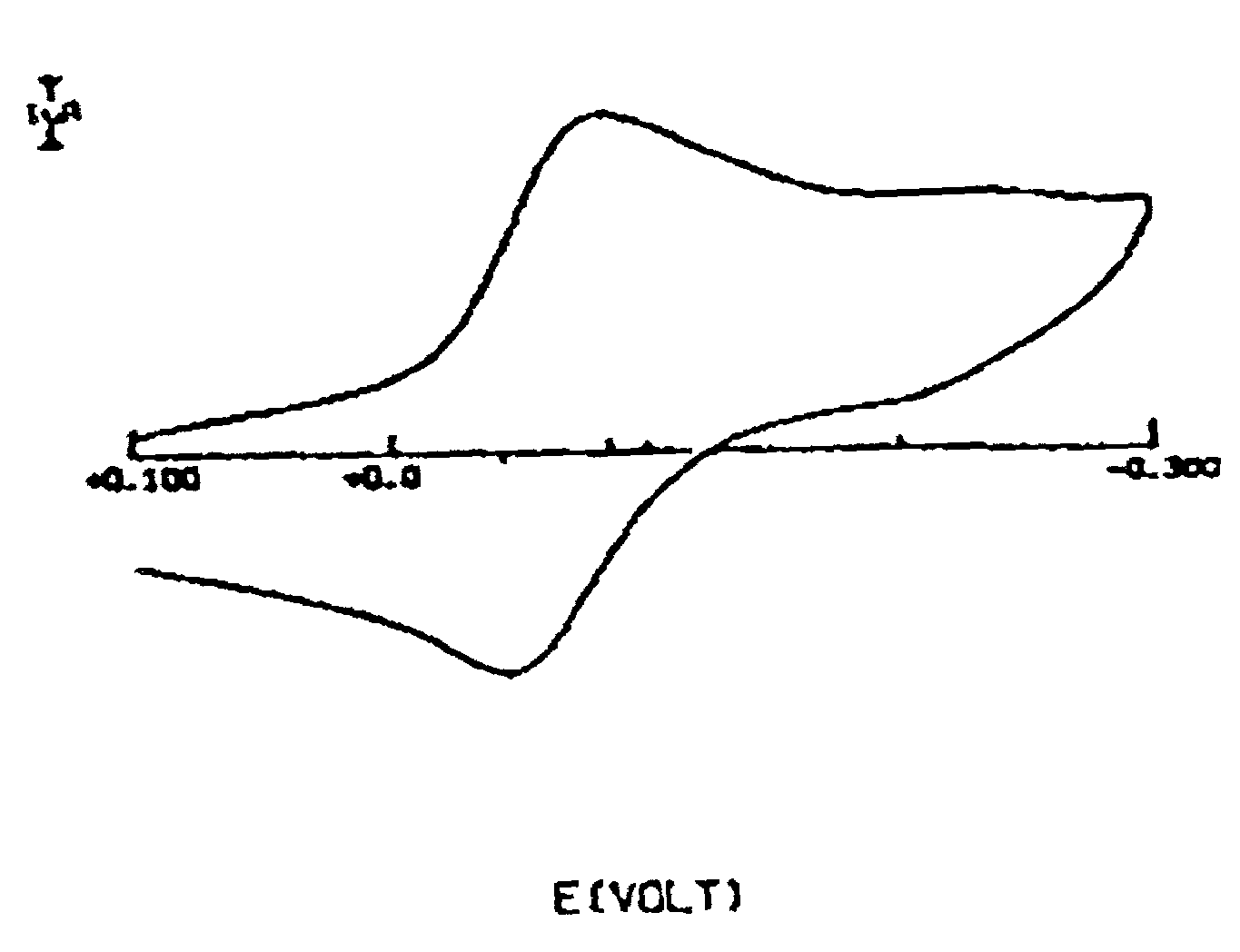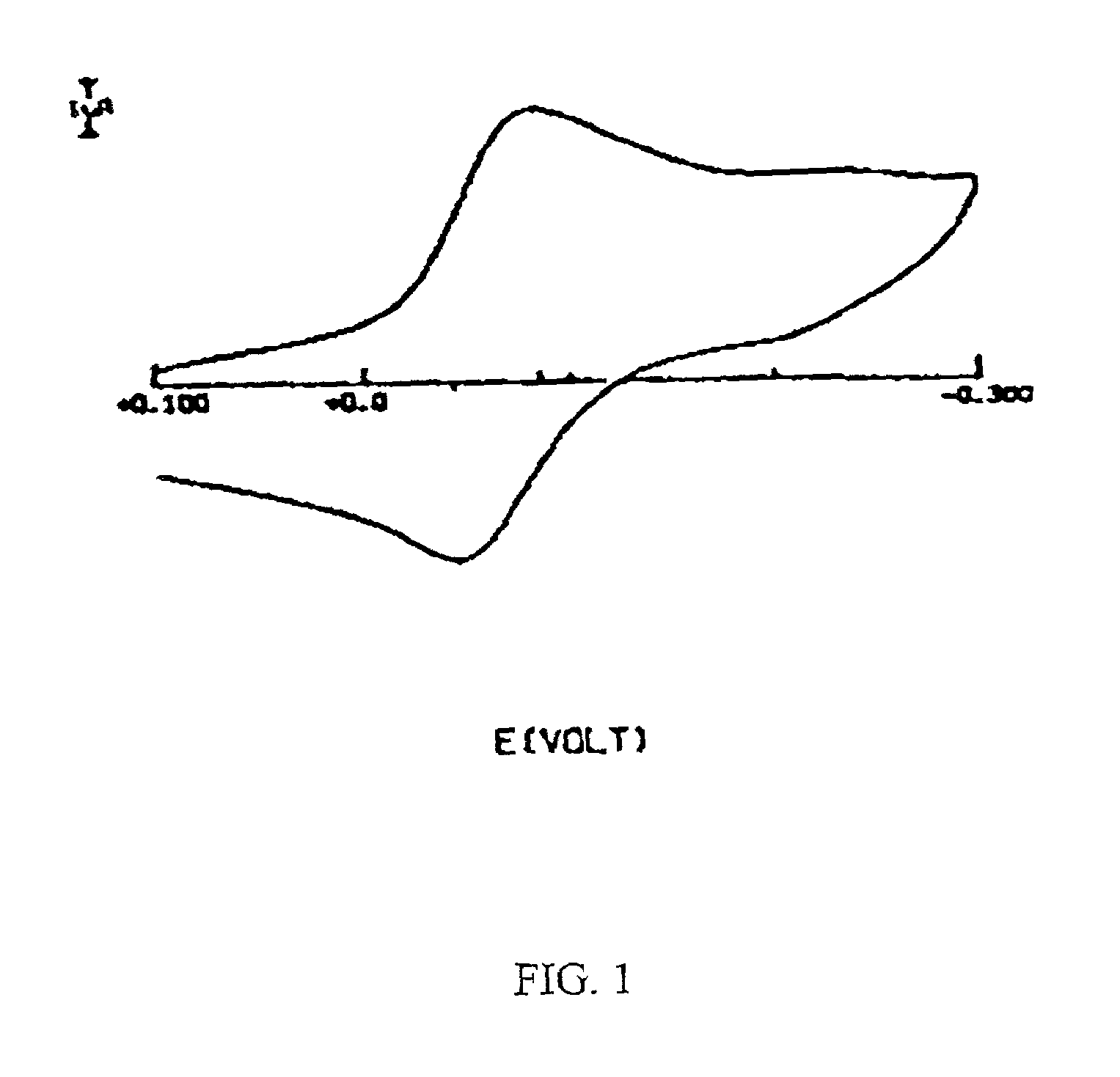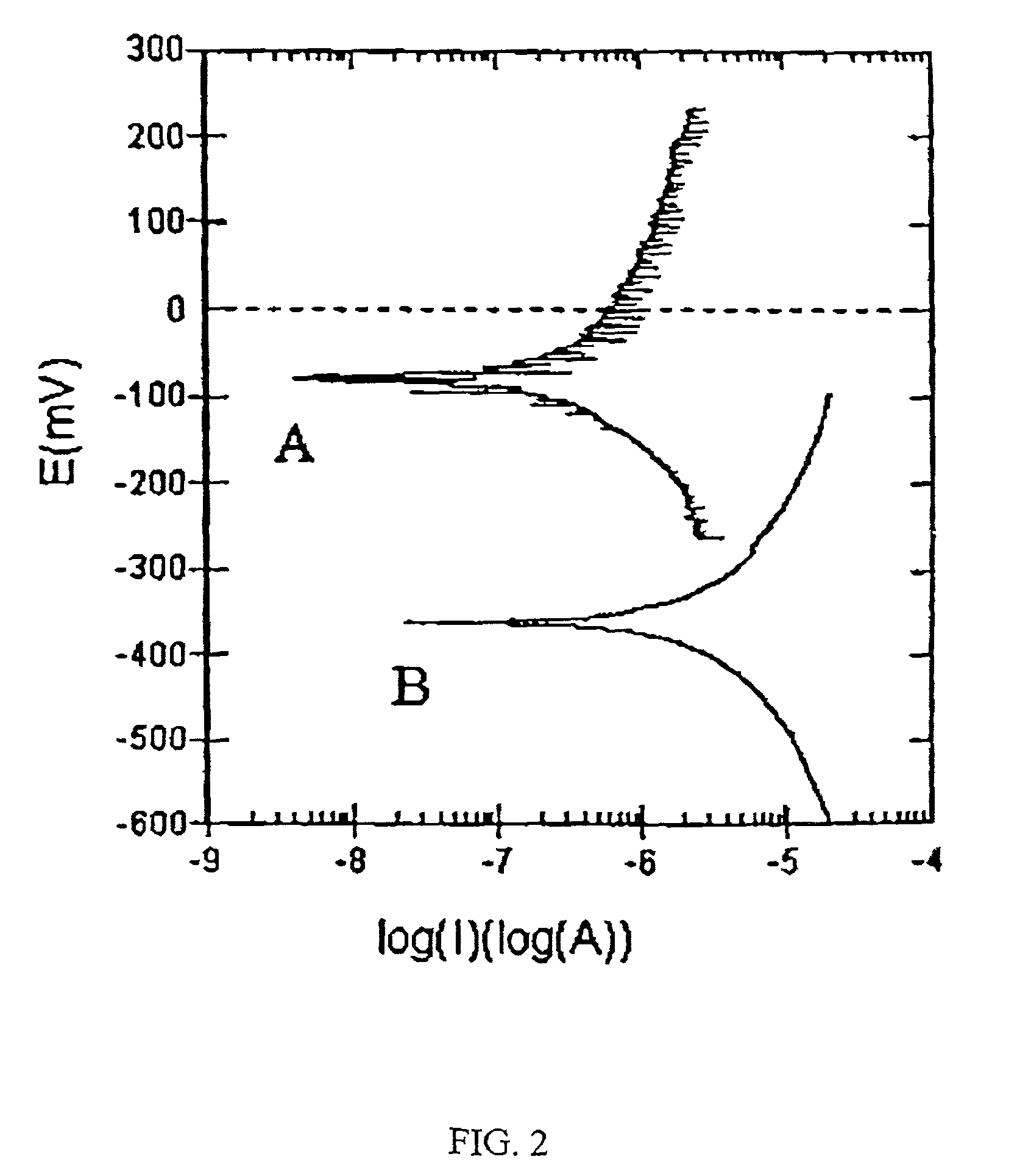Corrosion prevention of cold rolled steel using water dispersible lignosulfonic acid doped polyaniline
a technology of water dispersible lignosulfonic acid and cold rolled steel, which is applied in the direction of non-metal conductors, powdery paints, conductors, etc., can solve the problems of difficult processing and estimated 200 billion dollar problem of corrosion, and conventional polyaniline is limited by its processability
- Summary
- Abstract
- Description
- Claims
- Application Information
AI Technical Summary
Benefits of technology
Problems solved by technology
Method used
Image
Examples
example 1
[0055]Preparation of ligno-pani. Ligno-pani was prepared by dissolving 1.00 g of sulfonated lignin, REAX 825E obtained from Westavco, in distilled water. This mixture was then passed through a column packed with Dowex 50WX8-40 strongly acidic cation exchange resin. The solution was then diluted to a volume of 34 ml with distilled water. A 1.00 ml aliquot of aniline was then added to the solution. The temperature was reduced to 0° C. while stirring. Then 1.92 g of sodium persulfate was added. The solution was stirred at 0° C. for 4 hrs. The solution was removed and centrifuged twice with washing by distilled water to remove all excess lignin and salt. The wet cake was then stored at 0° C. until use. Conductivity of the polymer was approximately 0.1 S / cm. Conductivity values were obtained for compressed pellets using an Alessi four-point conductivity probe. Greater conductivity values can be obtained by using a lower weight ratio of lignosulfonic acid to aniline (See Viswanathan, U.S....
example 2
[0062]Electrochemical Impedance Spectroscopy (EIS) was used to investigate the corrosion-inhibiting properties of a ligno-pani-based coating on aluminum alloys under immersion in aerated 3.55% NaCl in water. The coating was prepared by mixing water-soluble ligno-pani with a high solids methoxymethylated melamine formaldehyde resin in a 1:2 ratio. The alloys used were aluminum 2024, 6061, and 7075.
[0063]Corrosion potential and EIS measurements were gathered on the test specimens aver a 1-week immersion period each. Nyquist as well as Bode plots of the data were obtained. The ligno-pani-coated alloys showed large fluctuations in the corrosion potential during the first 24 hours of immersion that later subsided and approached a steadier change. The EIS spectra of the ligno-pani-coated alloys were characterized by an impedance that is higher than the impedance of the bare alloy. Changes in the EIS spectra were similar for ligno-pani-coated aluminum alloys 2024 and 7075. There was a decr...
PUM
| Property | Measurement | Unit |
|---|---|---|
| Corrosion properties | aaaaa | aaaaa |
| Electrical conductor | aaaaa | aaaaa |
Abstract
Description
Claims
Application Information
 Login to View More
Login to View More - R&D
- Intellectual Property
- Life Sciences
- Materials
- Tech Scout
- Unparalleled Data Quality
- Higher Quality Content
- 60% Fewer Hallucinations
Browse by: Latest US Patents, China's latest patents, Technical Efficacy Thesaurus, Application Domain, Technology Topic, Popular Technical Reports.
© 2025 PatSnap. All rights reserved.Legal|Privacy policy|Modern Slavery Act Transparency Statement|Sitemap|About US| Contact US: help@patsnap.com



